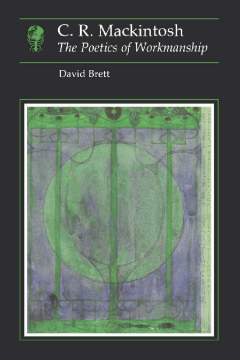
Additional Information
Book Details
Abstract
Between 1896 and 1906, Charles Rennie Mackintosh (1868–1928) produced a series of buildings and interiors in and around Glasgow of such startling invention that he immediately established himself as one of the truly great figures in early twentieth-century architecture and design. David Brett argues that Mackintosh's originality was grounded in a highly subjective "poetics of workmanship", in which the structure, features, interiors and furnishings of each individual building became subject to a unifying system of forms, metaphors and unconscious associations. The system Mackintosh evolved allowing for the formulation of an almost infinite series of ensembles.
After focusing on the various decorative details and interior spaces of Mackintosh's buildings the author reaches to the heart of Mackintosh's poetic system – the suffused eroticism of the sleek, "feminine" and intensely private "white interiors". A notable feature of this persuasive reappraisal of Mackintosh's work is the wealth of photographs by the author showing rarely featured details of buildings, interiors and furnishings.
David Brett is Reader in the History of Design at the University of Ulster, Belfast. He is also a playwright, novelist and mountaineer.
